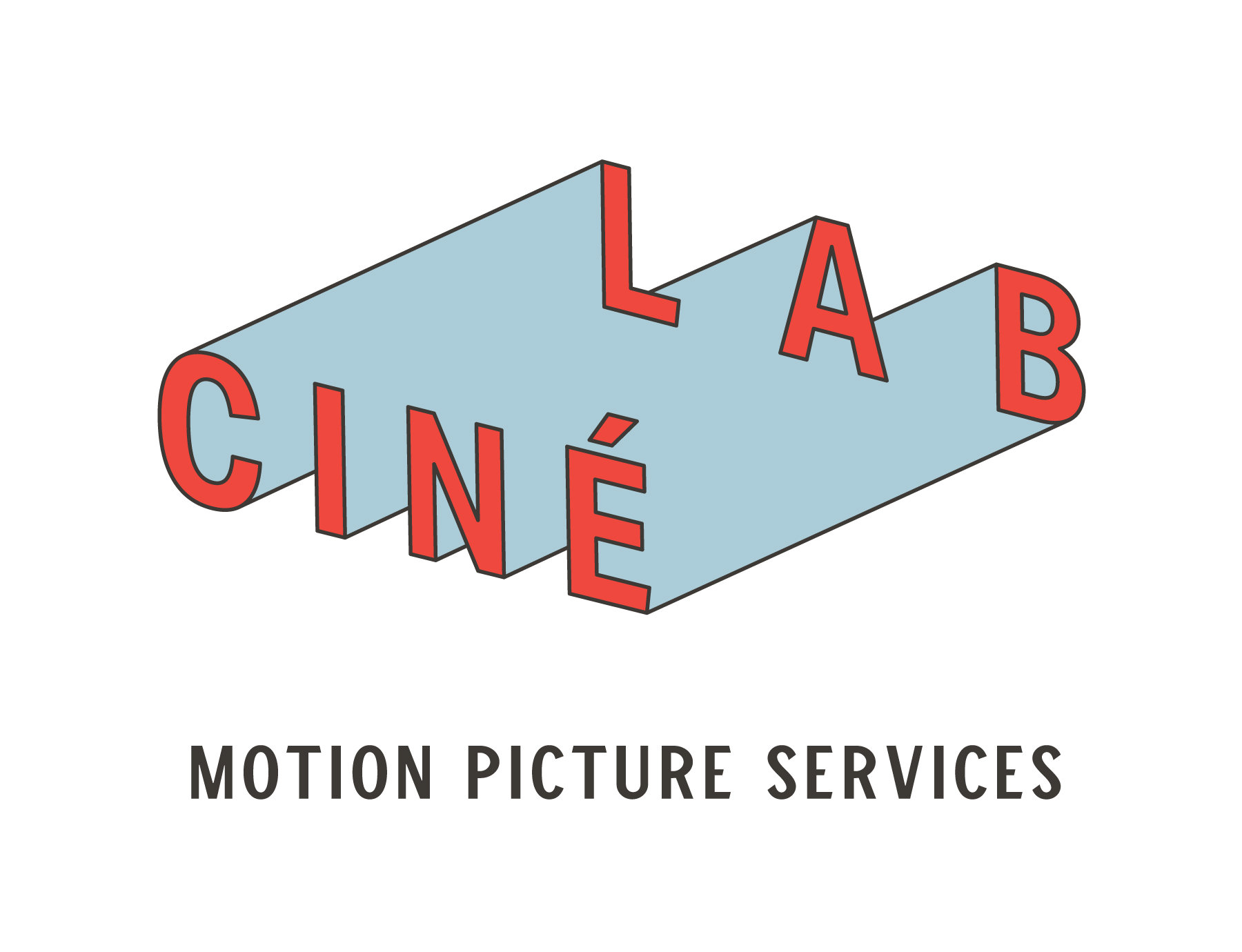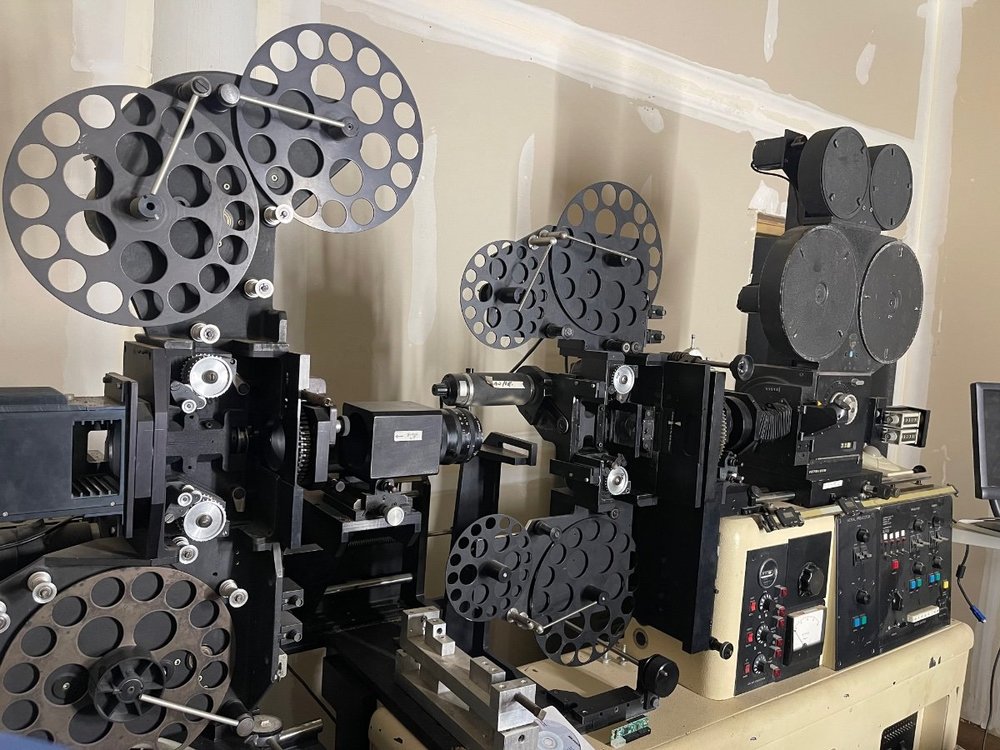-
Posts
2,364 -
Joined
-
Last visited
Everything posted by Robert Houllahan
-

Anyone try the Lasergraphics Archivist scanner?
Robert Houllahan replied to Daniel D. Teoli Jr.'s topic in Post Production
I think it depends on the level of service but in general a full service contract for a machine is about 10% of the purchase price annually. I am happy with the duo of LaserGraphics machines we have at Cinelab now that the "personal" has 2-flash HDR. The Archivist's newer Sony sensor 5.4K camera is very low noise and makes excellent scans. -
Digital sensors are linear devices (even when encoded into log) so a ISO change on a digital sensor is an overall dB gain increase. Film negative has a characteristic curve and a photo-chemical push will accentuate that logarithmic curve with more sensitivity in the middle than the top or bottom of the curve. In my experience 5219 pushed +1 is in the same sort of working range as an Alexa in the 1200 maybe to1600 ISO range, with the Alexa having some more shadow detail and 5219 more hilite overexposure tolerance and the mid being similar. YMMV
-
I would scan HS film at the framerate you expect to deliver at, i.e. 24fps 25fps as then it will have the intended slow motion. You could get a ProRes and DPX scan if you expect to do any speed changes in post.
- 1 reply
-
- 1
-

-
- 16mm
- high speed
- (and 20 more)
-

Rotary prism cameras in Openheimer
Robert Houllahan replied to massimo losito's topic in General Discussion
That client was the US Military Industrial Complex and that was fractions of pennies on the hundred dollar bills they happily burned through. Certainly not any more but it was only within this decade that Hycam cameras were mostly replaced for this kind of work by digital substitutes. The US Air Force had a few very substantial labs of their own. I bet Kodak would do a special run for the overall cost of a master roll now and I was exaggerating a bit about the 25M feet intro cost. -
A hair or other small object in the line scan gate on the Spirit does make a streak through the whole frame so it can very well be that is what this is, I have seen similar looking streaks on my Spirit(s) especially because how it dances so far across the frame and out of frame left. I would just send the film back for a rescan.
-
Was this scanned on a Spirit? It could be a hair in the line scan gate. A movie clip would be more helpful.
-

Rotary prism cameras in Openheimer
Robert Houllahan replied to massimo losito's topic in General Discussion
I would think that if you offered to buy 25 million feet of film from Kodak they would figure out how to use multiple layers of Vision 3 emulsion without the color dyes and couplers for a theoretical new monochrome stock. Probably at a $1.00/ft or more price. -

Why didn't Vista Vision ever catch on?
Robert Houllahan replied to Daniel D. Teoli Jr.'s topic in 35mm
Very cool electronics rebuild project! -

Why didn't Vista Vision ever catch on?
Robert Houllahan replied to Daniel D. Teoli Jr.'s topic in 35mm
I have a VV job doing tests right now. I am working on being able to run 9.4K x 7K VV scans for it. We also ran a VV short a few years ago that was really nice. -

Rotary prism cameras in Openheimer
Robert Houllahan replied to massimo losito's topic in General Discussion
I have two Visual Inst. Hycam-II cameras (built in 2002) and we used to do allot of work for Pratt&Whitney on FAA mandated tests for jet engines and other high speed camera work for military engines, including for the F-35. The largest test I worked on for them was a engine for the A380 and there was 27 Hycam-II 16mm cameras shooting SO-19 (7219 on Estar) at FR between 6000PPS and 11,000 PPS along about a dozen digital high speed cameras. The test was lit with 500 1K Lowel Omni quartz lights. The newer Hycam-II cameras have new motor control electronics which allow for the camera to get to full speed within 50-75ft of a 400ft roll. P&W would "rent" the lab for a day and we would process the negative and then do a transfer to video, but then cut the negative down to the sections they wanted to really see and make a timed 16mm print. I remember holding about 850ft of negative and thinking it cost about $35 Million to produce it. Picture clarity and detail was really excellent and far exceeded the digital cameras even very recently. The digital cameras would also have issues failing due to the very high vibration environment of a full running 80,000lb thrust engine blowing up. It was only in the last five years that they switched entirely to digital for this work. -

Any new developments with the FilmFabriek HDS+?
Robert Houllahan replied to Daniel D. Teoli Jr.'s topic in Post Production
The Cintel machine is but 16mm is definitely capable of allot more detail than just 2K when scanned on a machine that is capable of higher res scans. -

Any new developments with the FilmFabriek HDS+?
Robert Houllahan replied to Daniel D. Teoli Jr.'s topic in Post Production
I completely disagree with this. -

Any new developments with the FilmFabriek HDS+?
Robert Houllahan replied to Daniel D. Teoli Jr.'s topic in Post Production
I cannot see that being the case either I am sure FotoKem is not charging $0.25/ft for 4K 16mm scans on the Scannity. Neither is Pro8mm on their Scan Station. -

Any new developments with the FilmFabriek HDS+?
Robert Houllahan replied to Daniel D. Teoli Jr.'s topic in Post Production
In all deference to Nikki I am sure she is nice and thorough (we just ran some B&W for her) buying a machine and immediately undercutting everyone else with the same machine's prices is IMO not the best way to start a business. I am sure this can work for a while if you have a scanner in your house and it is just you and a partner running it as a personal enthusiast venture. Start adding cleaners and film processing in a residential neighborhood etc. etc. etc. The Scan Station's ubiquity has largely made film scanning a commodity as DaVinci Resolve has for color grading and there are shops who use Resolve and charge bargain prices and shops that charge top dollar. And there are shops with Nucoda or Baselight etc. Racing to the bottom of the price scale is not a great thing and there are many many pro and other clients who won't work with the "cheapest" shop because they feel like something is wrong when the price is too low. -

Laser Graphic Director 10K vs 13K
Robert Houllahan replied to Boris Kalaidjiev's topic in Film Stocks & Processing
longer exposures will actually show more of the inherent fixed pattern noise present in the shadow area of the sensor. Allot of the reason for "HDR" multi flash is to work to overcome the sensor noise flaws by pushing a "hot" second exposure to get the densest part of the negative into a better response portion of the sensors dynamic range and by doing so keeping the FPN out of the visible scan. This can get more DR from the shot film especially if it is overexposed but mostly the HDR process cleans up noise from the sensor. -

Any new developments with the FilmFabriek HDS+?
Robert Houllahan replied to Daniel D. Teoli Jr.'s topic in Post Production
" It's not clear this is the case. It is. I got one. It is a even newer gen Sony camera than the 6.5k one and it is excellent, extremely low noise and higher resolution than the 5k cmosis. The JAI Spark with the CMV20000 is 5120 x 3840. The New Sony in the Archivist is 5.4K x 3.8k And if you can find anyone who has been more of a pain in Stefan and LG's butt about sensor noise on the Scan Station with the 5K camera than me you should buy them a donut and a coffee. -

Laser Graphic Director 10K vs 13K
Robert Houllahan replied to Boris Kalaidjiev's topic in Film Stocks & Processing
Well to what purpose? on a monochrome sensor scanner? You could control the camera exposure time if you cannot control the lamp but why bother when precision PWM LED lamp control is a trivial thing to do these days? -

NEW ORWO STOCK - TEST RESULTS
Robert Houllahan replied to Ludwig Hagelstein's topic in Film Stocks & Processing
I honestly don't care if Orwo made a deal with ZUUL and had the formulas for the Agfa 320 smuggled out of Valhalla by Tinkerbell. The only relevant thing is a new color film stock and there are some rolls being shot already so it appears to be real and not vapor. After that the only question is if they can make it consistently and at a fair price and stay in business. -

Any new developments with the FilmFabriek HDS+?
Robert Houllahan replied to Daniel D. Teoli Jr.'s topic in Post Production
Yeah I have one of those VieWorks too but Rennie found it to be complex to integrate into the Xena especially for the speed. I think the Arri (and probably the director?) do a single 1 pixel X-Y shift per microscan. -

NEW ORWO STOCK - TEST RESULTS
Robert Houllahan replied to Ludwig Hagelstein's topic in Film Stocks & Processing
I ordered some 16mm print stock from Orwo and am ordering some 100ft rolls of the color. I hope the stocks are sent in a relatively timely manor. I am willing to cut Orwo some slack as I cannot think it is an easy business to run and I hope they make it as a supplier of film materials. That said it would be encouraging to see them have a person who really can take care of the communications. -

Laser Graphic Director 10K vs 13K
Robert Houllahan replied to Boris Kalaidjiev's topic in Film Stocks & Processing
I think for film scanning the Director and Arri work the same and do one X-Y shift for microscanning, two exposures. The VieWorks does 4 quadrant shifts for 4 exposures.




